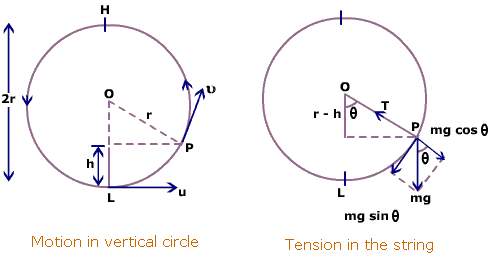Time Period of Vertical Circular motion

Note: has been used for the angle with the vertical, measured in anti-clockwise direction.
As shown in the figure, the tangential acceleration is . Thus, the angular acceleration will be , where is the radius of the circle. Writing
Now, I don't know how to integrate this expression between , to calculate the time taken for complete oscillation.
So, please help by proceeding from here or if there is any other method to calculate the time period, please mention.
Thanks.
No vote yet
1 vote
Easy Math Editor
This discussion board is a place to discuss our Daily Challenges and the math and science related to those challenges. Explanations are more than just a solution — they should explain the steps and thinking strategies that you used to obtain the solution. Comments should further the discussion of math and science.
When posting on Brilliant:
*italics*or_italics_**bold**or__bold__paragraph 1
paragraph 2
[example link](https://brilliant.org)> This is a quote# I indented these lines # 4 spaces, and now they show # up as a code block. print "hello world"\(...\)or\[...\]to ensure proper formatting.2 \times 32^{34}a_{i-1}\frac{2}{3}\sqrt{2}\sum_{i=1}^3\sin \theta\boxed{123}Comments
There is no simple method to evaluate that integral.
Your equation is simply dt2d2θ+Rgθ=0
The solution of this requires an elliptic integral to be solved.